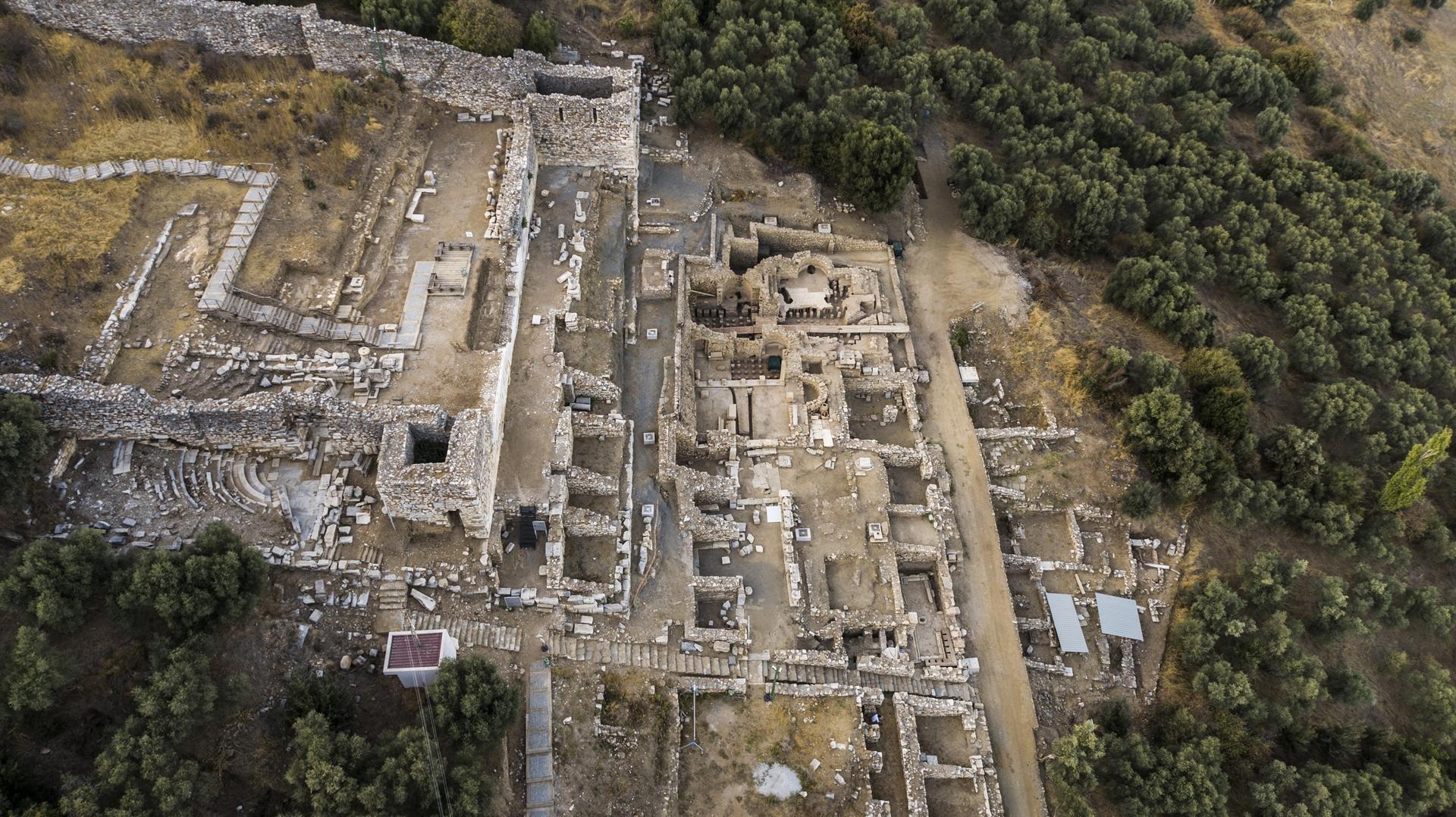Cisterns unearthed in Metropolis ancient city
ISTANBUL

On its 30th year, archaeological excavations in the ancient city of Metropolis continue to reveal the secrets of history. This year the excavations, headed by Manisa Celal Bayar University Archeology Department academic Professor Serdar Aybek, unearthed four monumental structures which are connected to each other.
The four cisterns, which had no traces in the ancient city before, were found under a seven-meter earth fill during the excavations that started in July in Metropolis, known as the “City of Mother Goddess.”
The fact that the cisterns, which are believed to have been used to meet the water needs of the city in the Late Roman period, are almost completely preserved, is of great importance in terms of revealing important information, findings and historical artifacts about the period.
One of the main reasons why the people of Metropolis built these cisterns in the acropolis, the highest center of the city, as an alternative to the water resources in the lower city, stems from the defense requirement especially during the Byzantine Age.
The cisterns in the acropolis, surrounded by strong walls, were vital to resist the siege, as they would meet the water needs of the people for a long time during a possible attack or siege on the city. It is estimated that the four cisterns in the metropolis acropolis have the capacity to carry 600 tons of water.
Considering the daily water consumption of the people, agricultural activities and water needs of public buildings, why the four cisterns were built all next to each other appears convenient.
“We are excited to open a new door to the lives of people that lived in this region 1,500 years ago. The four cisterns newly discovered in the acropolis prove the knowledge of the masters in the ancient period in Metropolis in the field of water engineering. At the same time, we estimate that the cisterns supplied water to the entire settlement on the lower slopes of the acropolis, and especially to the upper bathhouse structure. The structures, which had approximately three floors, are also of great importance in terms of being the best-preserved monuments in Metropolis,” Aybek said.
Nevgül Bilsel Safkan, general manager of Sabancı Foundation, which has been supporting the excavations since 2003, stated that they are very happy to support the Metropolis excavations for 17 years, adding, “The four cisterns found during the excavations this year in the City of Mother Goddess Metropolis carry important information on the city’s water need, eating habits, objects used in daily life and defense strategies.”
Cistern sheds light on eating habits back then
It is understood from many food remains, animal bones and ceramic pieces found in archaeological excavations that the city of Metropolis began to use the cisterns as garbage dumps in the 12th and 13th centuries A.D. Most finds in this area are glazed ceramics with vegetable and animal decorations. The examinations made on the animal bones found in the cistern show that bovine, ovine and poultry have been consumed extensively.
Marble architectural pieces, which were found on the cistern floor and determined to belong to the Hellenistic period before the construction of the cisterns, were also unearthed. Among these pieces, there was a rectangular altar and an honoring inscription.
About Metropolis
Metropolis, what was attempted to be unearthed during excavations since 1990, is located between Yeniköy and Özbey neighborhoods of İzmir’s Torbalı district. The history of Metropolis dates back to the early Neolithic Age, the Hellenistic Age, Roman and Byzantine periods.
During the excavations so far, a Hellenistic-era theater, Bouleuterion (Assembly Building), Stoa (Gallery with Columns) and two Bath Structures built in the Roman Empire period, bath and Palaestra (Sports Field) complex, Mosaic Hall, Peristile House, shops, structures and spaces that constitute the texture of the ancient city such as public toilet, avenue and streets have been unearthed.
In addition, during the excavations of these sites, more than 11,000 historical artifacts consisting of ceramics, coins, glass, architectural pieces, figures, sculptures, bone and ivory artifacts and many metal finds were unearthed. The artifacts obtained during the excavations are exhibited in İzmir Archeology Museum, İzmir History and Art and Selçuk Ephesus museums.
















